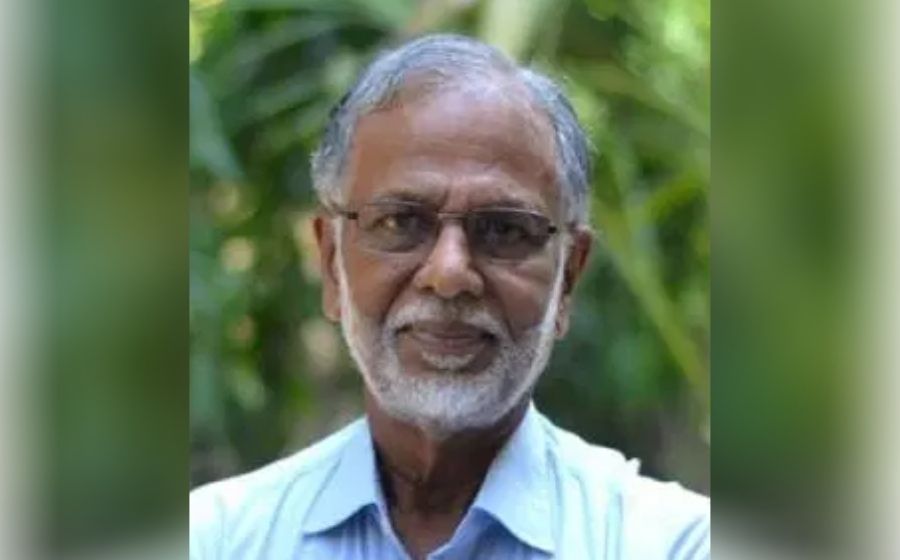
Doctor behind Pulse Polio bats for COVID-19 vaccination policy

In the wake of the COVID-19 pandemic, the Central government should have a vaccination policy before embarking on a campaign for the prevention of the disease, says T Jacob John, a virologist and former chief of the virology department at the Christian Medical College (CMC) in Tamil Nadu’s Vellore.
Speaking to The Federal, John explains what the Centre could learn from the pulse polio immunisation campaign that was first taken out in Vellore district.
Vellore’s case
Like many other third-world countries, India had battled polio for a long time. In 1949, just two years after gaining independence, the country began its fight against the virus. The same year, it had set up the first polio research unit in Mumbai, under the Indian Council of Medical Research (ICMR).
In 1964, the second polio research unit was established at the CMC as the Enterovirus Laboratory.
Three years later, T Jacob John, a virologist, took charge as the chief of the virology department at the CMC. He continued in the position until 1995, when the whole country had started to implement the poliovirus immunisation programme charted out by him in Vellore way back in 1983.
To combat paralytic polio in the country, a nationwide synchronised vaccination drive was launched and children under 5 years of age were given two doses of oral polio vaccine once in two months.
Related News: Scientists identify potential drug candidate to combat COVID-19
“In India, about 140 million doses of oral polio vaccine would have to be distributed thrice every year in a colossal vertical program. We recommended a simpler and more practical strategy of using the presently available amount of vaccine to establish control in selected areas,” wrote John, in a paper about the immunisation drive in Vellore.
“The control zone would be expanded each year, until the entire nation was covered. The campaign would be part of the immunisation program of local health authorities, thus strengthening the primary health care system and could begin in any community even as small as a village,” he adds.
In 1980, a local polio surveillance system was established. Vellore town was divided into 16 zones and, by the end of 1981, the oral polio vaccine was administered through three-dose campaigns at monthly intervals. The programme was named Pulse Polio immunisation, a name that is globally popular.
“Before launching the programme, we prepared the people. We gave advertisements in cinemas, newspapers, schools and colleges. A mammoth rally walked all the way from Katpadi Railway Station to Bagayam Medical College. We set up vaccine-administering stations at municipal health centres and even in kindergarten schools. We asked students to volunteer for crowd control and documentation. Rotary clubs too helped in this project,” John tells The Federal.
Due to these efforts, Vellore became the first town in the country to completely get rid of polio in 1983. In 1995, the country had launched a pulse polio immunisation program under Universal Immunisation Program.
Suggestions to government
“The immunisation policy we have now is for pre-school children. But COVID vaccination is going to be carried out across all age groups. Similarly, pre-school immunisation programmes are paid for by the government. For COVID vaccination, the government must decide whether people or states should bear the expenses,” he says.
“Besides, what will be the cost of a vaccine. During polio immunisation drives, the vaccine was administered at public health centres and sub-centres. Whether the same will be followed or will it be available in private hospitals? To shed light on these issues, we need a vaccination policy,” says John.
The pulse polio immunisation programme was carried out as a one-day camp. But COVID needs at least one to two week-long camps, he says.
“The COVID vaccination may cause reactions in people. So we need to have a plan, where the people will get treated. We should keep ready the computerised documentation of the people who have already undergone treatment for COVID and affected by coronavirus infection, who do not need vaccination. That would facilitate the vaccination drive,” adds John.
According to him, frontline warriors, senior citizens and people with comorbidities must be given priority during the vaccination drive.
Related News: Define inclusive vaccine access strategy now: Rahul Gandhi to govt
“Generally, the government waits until the vaccine is licensed and then plans vaccination drives. In this case, instead of waiting, the government should be prepared well in advance. To prevent overcrowding, the appointment system should be introduced. The government can start to plan now on how to handle these things” he says.
“The immediate goal of a vaccination program is to protect individuals from the disease. The long term goal will be its eradication. Many people say that the world will live with COVID in future. Why waste time when we will have a vaccine? If the disease is eradicated locally, it will lead to global eradication. The Indian representatives at WHO must strive for that,” John says.
Since the WHO has a representative from India — Soumya Swaminathan, chief scientist — and Union Health Minister Harsh Vardhan, who is the chair of WHO’s executive board, it will make a remarkable difference in India’s COVID vaccination program, leading to eradication globally, opines John.
Though news about developments in vaccine seems to boost the morale, vaccination drives cannot be achieved without sufficient budget.
“There are enough funds available through PM Cares Fund. Besides, why should the government give the vaccine to rich people for free? It may devise some plans. For example, people who get rice at PDS shops can be given free vaccination. But people who buy other items, except rice, such as sugar can be asked to pay,” says John.


